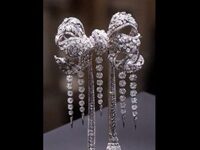Consider, for instance, the new, widely derided “For Mary Wollstonecraft” monument in London. “Why couldn’t a statue of Wollstonecraft, the individual woman, be seen as universally inspiring and iconic? It was hard not to view the monument as a victim of its own good intentions, inadvertently becoming yet another example of a female form as emblem of an abstract idea, such as the Statue of Liberty or Marianne, a symbol of the French Republic, or any number of nameless angels, goddesses or graces on memorials. We’ve no lack of statues of women, really; it’s just that too many of the ones we have are devoid of personhood.” – T — The New York Times Style Magazine








